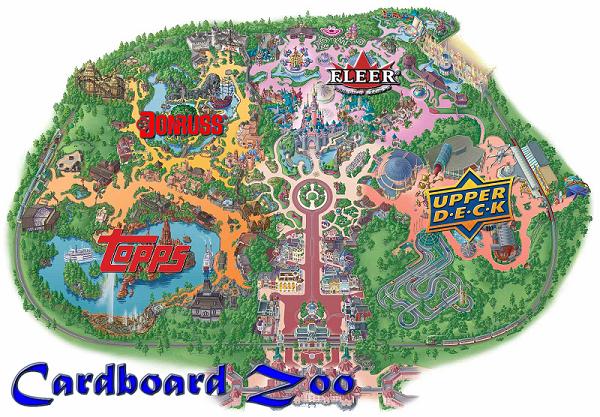Set size: 20 cards
Front Design: The white-bordered cards have a dashed line leading from the Classic/Best logo in the upper left corner to the player's name, in gold foil at the bottom. In the bottom border is the team name and player's position.
Back Design: The backs have a thin black frame and the player's major league affiliate logo as a background. The top row has the card number (BC prefix), the player's name in a red oval, and position. Following are the player's biographical stats, prior professional statistics, and information on how the player was acquired. The bottom of the vertical cards have the Classic/Best logo, MLB logo, and minor league team logo.
Parallels and Similars: This set is in the same design as the regular 1991 Classic/Best set.
Distribution: Cards were inserted one per jumbo pack of the Classic/Best minor league full set.
Thoughts: In 1991, only a few sets had gold foil: Stadium Club was the first major issue full set, and the Desert Storm parallel of Topps' flagship issue had a gold foil stamp. 1991 Leaf had an insert with gold foil, and a few of the 1991 Bowman cards had a small gold foil stamp. So this set ranks up there with some of the more "innovative" issues of the year. There are some players in the set that became successful at the major league level, including Ivan Rodriguez, Jim Thome, and Arthur Rhodes. Mike Schmidt, hardly a minor leaguer, is card number 1 in the set.



I love this set. Not so much the gold bonus cards, but the over all set. The main draw was the chance for an autographed copy of that Mike Schmidt card.
ReplyDeleteIf you collected minor league cards, 1991 was a great year. You had Classic Best (both the pack-issued sets and team sets), two large LineDrive sets from Impel and another ton of team sets from ProCards along with the Tomorrow's Heroes pack-issued set.
Jason: I remember buying a decent bit of the main set, and any other minor leagues I could find (which wasn't that many). 1991 is about the time some minor league sets started looking good, too, instead of just simple designs on cardboard.
ReplyDelete